Software
One of the goals of RING is to invent, design and develop game changing methods to reconcile earth processes and field observations within a stochastic and multiscale workflow. The corresponding software not only serve as proofs of concept to support publications, but also can be used and industrialized by the RING Consortium members.
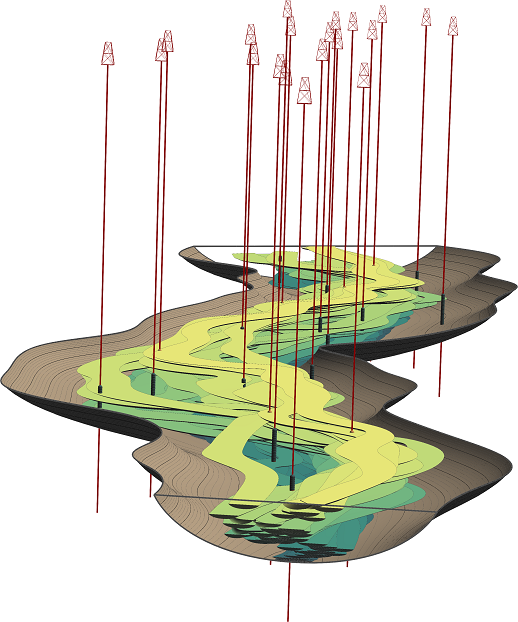 ConnectO is a plug-in for the SKUA-GOCAD software to simulate channelized systems and analyze categorical realization quality.
ConnectO is a plug-in for the SKUA-GOCAD software to simulate channelized systems and analyze categorical realization quality.
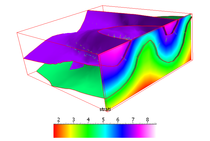 Building 3D geological surfaces from field data using implicit surfaces on tetrahedral meshes.
Building 3D geological surfaces from field data using implicit surfaces on tetrahedral meshes.
StructuralLab includes various interpolation contraints to create implicit structural surfaces from location data, orientation data, axial data about folds. It also implements a dip domains approach.
Since 2018, the main StructuralLab fonctionalities have been integrated in RingToolKit
A stand-alone open-source python implementation of the approach is also available in LoopStructural (Grose et al, 2021)
SCAR is an external library for generating, repairing, simplifying 2D structural models. SCAR means Simplification, Creation and Automatic Repair.
The main functionality of the SCAR library is the simplification and repair of geological models (available in 2D). But SCAR provides many useful utilities for 2D geological models: conversion of models from one file format to another one, generation of triangular meshes (need other external libraries), remeshing, computation of statistics on mesh quality and model complexity, ...
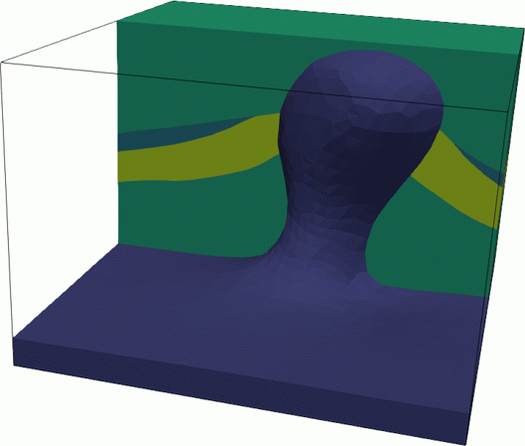
LUMOS is a trianglar and tetrahedral remeshing library which aims at enabling the robust insertion of implicit geological surfaces into existing geological models. This serves two purposes:
- Incremental geological model building,
- Modeling of topological and large geometric uncertainties in geomodeling.
LUMOS was primarily developed by Capucine Legentil. this C++ / Python library is built on top of mmg.
SIGMA (Seismic Imaging for Geomodel Analysis) is a collection of programs to close the loop between seismic imaging/modeling on the one hand, and seismic interpretation and structural modeling on the other hand. The long term goal of the library is to develop tools needed for reducing structural uncertainties by waveform inversion...
OM-MADE is an open-source progam written in Python v3. It is designed to simulate one-dimensional solute transport in multiple exchanging conduits and storage zones.
Karstnet is an open-source python3 project providing tools for the statistical analysis of karstic networks.
Magnetostratigraphic correlation is generally a manual task. The Cupydon software allows you to automatically correlate your mag section to the reference scale. The main benefit is not so much the gain in time but the possibility to look at a large number of likely correlations depending on the length of your section and on the variations of the sedimentation rate.
Uncertainty Visualizer is a stand-alone application dedicated to uncertainty visualization, developed by Thomas Viard. It features two different methods, which respectively map uncertainty to the intensity of a 'fabric' texture pattern or to the blending ratio between a sharp and a blurred display of the model. Input data should be provided as grid slices given in the GSLIB format.
Uncertainty Visualizer reproduces the basic behavior of the UncertaintyViewer Gocad plugin. The Gocad plugin (accessible to sponsors) has much more features for the uncertainty displays on corner-point reservoir grids.
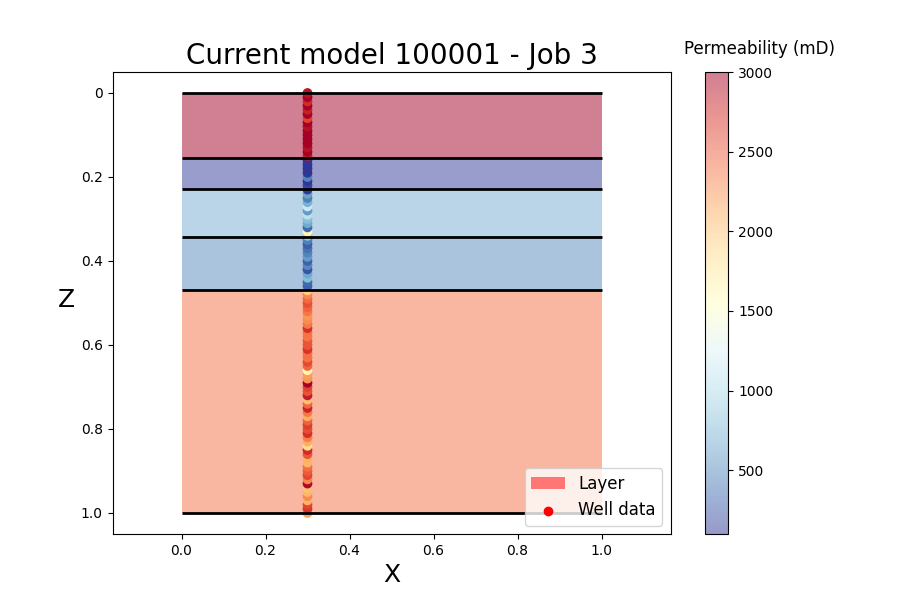
Transdimensional inversion of flow data (TIFlow) is a library to perform transdimensional inversions in history matching problems. In contrast to Bayesian sequential modelling in which permeability values are inferred in a fixed reservoir geometry, TIFlow allows transdimensional Monte Carlo methods based on a reversible jump Markov chain Monte Carlo algorithm (RJMCMC). These approaches are a way to solve the inverse problem with a self-adaptive geological parameterization in which the number of model parameters is unknown.
The code considers a 2D layered reservoir model. The number of geological layers is variable and the algorithm will converge towards the appropriate reservoir parameter (permeability property) and reservoir geometry (number and location of layer interfaces), using flow data and static reservoir data.

SmoothQuad is a library for 2D meshing and optimization of homogenized medium for seismic simulations. implements mesh optimization algorithm with a modified cotangent Laplacian algorithm in order to bring each node in a position in which the wave simulation would perform better (maximizing the Δx/Δt in each element). The mesh is returned in msh 2.2 format and the code provides some methods to integrate it and the homogenized model into the SpecFem2D simulator.
This library is primarily being developed by Marius Rapenne in C++/Python/Fortran in the frame of his PhD thesis on Adaptive Homogenization for Seismic Risk Estimation.
The code is avalable on Github for sponsors here.
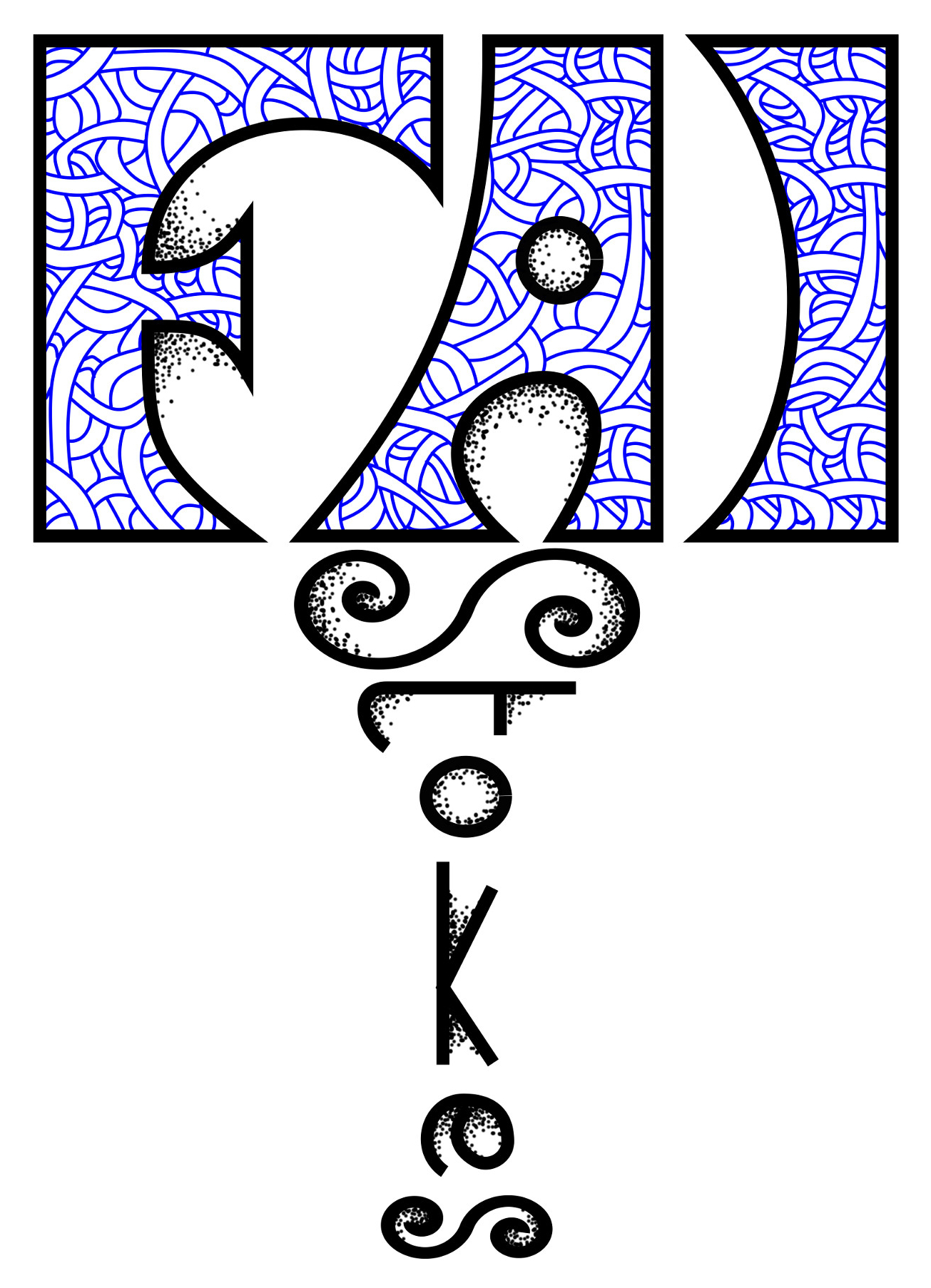
The FAIStokes (Finite Element Arbitrary Lagrangian Eulerian Implementation of Stokes) software was developped to do mechanical simulations of the subsurface while considering rocks as highly viscous fluids. In particular, its focus is placed on using creeping flow for the structural restoration of geological models.
Goscope is a SKUA-GOCAD plugin dedicated to seismic interpretation.
It includes functionalities to help with the following tasks:
- Automatic extraction of geological interfaces (faults, horizons, etc.) as point clouds
- Stochastic simulation of salt bodies and welds
- Other: image processing algorithms, computation of seismic attributes
